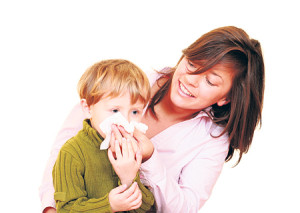Humidity is the amount of water vapor present in the air that plays a role in both the development and treatment of allergies. Conditions such as allergic rhinitis have symptoms such as nasal irritation and congestion as well as the inflammation of the tissues in the nasal mucosa. Certain symptoms such as dry mouth occur when various medications are used in providing symptomatic control of allergies. By breathing in air with slightly higher humidity by using a humidifier, it can help relieve the discomfort and undesirable symptoms of allergies and side effects of certain drugs.
https://www.youtube.com/watch?v=gP59vUfEZlU
One of the usual culprits includes dust mites that thrive at humidity levels that exceed at a certain minimum. Due to this, maintaining a certain humidity level in the house can be beneficial for those who suffer from allergy-induced asthma or perennial allergies.
What is humidity?

It is important to note that the comfort level partly depends on humidity since the air of a certain temperature tends to feel warmer if the humidity is high. Equally, air in the similar temperature will feel cooler if the humidity is at a reduced level. Due to this, avoidance of dry air during winter will provide a warmer feeling at a given temperature.
Dust mites are present in all places where there are humans. They flourish in higher temperatures and high humidity in the 70-80% range. Even though it is impossible to completely eliminate dust mites and their allergy-inducing droppings, it is still possible to regulate their numbers by controlling the humidity levels. Along with appropriates measures that you can learn in a first aid course, you can ease the symptoms experienced by the individual.
Today, there are modern humidifiers that have a built-in hygrometer. All you have to do is to select a setting between 40-48% humidity so that a balance is established in dust mite control and comfortable moist air beneficial to the skin.
What are the types of humidifiers?
For those who are planning to purchase a humidifier, the best option is a point-of-use humidifier. These are usually portable and can humidify air in one or several rooms. They are built with a water tank that must be regularly refilled.
The prevalent type is an evaporative humidifier or cool mist humidifier which utilizes a reservoir, wick and filter to spread water vapor in room temperature into the air. Some are programmable and feature a built-in hygrometer to maintain the ideal humidity level. The filters should be changed regularly to avoid the growth of mold and saturation with minerals from tap water.
The other types of home humidifiers available in the market include vaporizers, ultrasonic humidifiers and impeller humidifiers. Since they do not utilize filters, the ultrasonic and impeller models may deposit minerals as fine dust on nearby furniture, thus are not suitable choices. The vaporizers can be effective but utilize more energy than the simple evaporative humidifiers.
